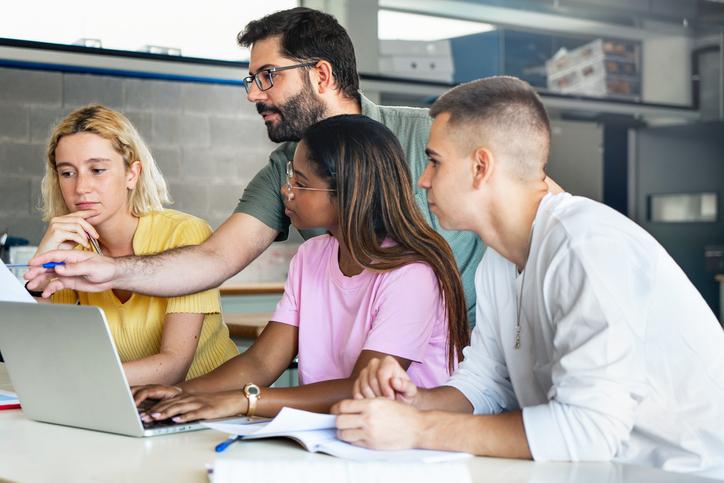
Transition from expert to guide by embracing generative AI
Remember when we used to say “It was better back in my day”? That saying is now obsolete thanks to generative AI, which has rendered comparisons between the past and present almost irrelevant. This AI-driven magic has not only helped us conquer hindsight bias but, more importantly, has rekindled our inner students.
My first encounter with generative AI (gAI) left me excited and apprehensive. The prospect of whipping up an essay in five minutes seemed like a dream. But, as with any revolutionary tool, questions started to swirl in my mind. How would this affect my role as an educator and researcher? What about my students?
- Embrace AI tools to improve student writing
- ChatGPT and the future of university assessment
- Enhancing manuscript clarity and ethical credibility with ChatGPT
We’re often told that the greatest teachers are those who are students themselves and yet, in our capacity as educators, making time between teaching, research and our personal lives to be a student is difficult. But the entrance of gAI shifted the balance. We had no option but to adapt and learn, and in doing so, we truly became students once again.
At first, I struggled with the gAI interface, feeling overwhelmed and confused. I bonded with colleagues who shared this feeling – we were no longer the experts, but instead had to find a way to best use gAI to our advantage while teaching our students to do the same. This experience provided a stark reminder that as much as I could try to sympathise with my students in theory, their struggles were far more profound. It allowed me to connect with them on a deeper, more personal level, with a greater sense of compassion and empathy.
As faculty, we tend to draw from our own experiences, attempting to motivate students with tales of our past successes. However, I’ve come to realise that while this might instil hope for the future, it does little for them in the moment when they’re feeling overwhelmed.
Hindsight bias, with its tendency to look back at the past through rose-tinted glasses, finds no place in the classroom. Our experiences certainly shape our perspectives, but putting them on a pedestal is neither fair nor helpful.
That said, we’re all too aware of how easy it is to succumb to hindsight bias, especially when interacting with a generation different from our own. Grappling with gAI forced me to confront and dismantle this bias. Compared with my own undergraduate days, today’s world has undergone a radical transformation. We are thrust to the present, facing this new normal that we are all part of.
This transformation has enhanced our dynamic with students in three ways:
- By acknowledging our own fallibility, we build trust. When uncertainty looms, as it always will in new territory, there is power in simply saying, “I don’t have the answer. What are your thoughts?” It’s simultaneously frightening and exhilarating to be reminded we have so much more to learn and discover. In admitting this, we demonstrate vulnerability and give students an opportunity to see us in earnest – and build trust.
- In sharing our wildest ideas, we encourage our students to do the same. That bold new notion you were toying with? Bring it to the table for discussion. “Have you guys tried this with gAI? How well did it work for you? Oh, there’s another platform that’s better? Cool, thank you.” As we share our ideas with students, we create a space for learning that they feel comfortable enough in to share theirs.
- With a more open rapport, we can guide students to greater clarity of their own strengths. As we are increasingly open with our students, I have found that they now approach us more frequently with their innovative discoveries. “Prof, I experimented with this technique. What are your thoughts?” “Hmm, it brings up some good points. But in your original, you set up a cohesive narrative that would draw your audience in. How about combining the two?”
Engaging in these dialogues, I realised we’ve transitioned into experienced guides, instead of mere subject matter experts. We are in a position to offer perspectives on students’ progress and convey that gAI isn’t a replacement, but a tool that enhances their skills. We can assist them in navigating its intricacies and help them advance their abilities.
With the advent of gAI, gone are the days of saying “When I was your age” or “Back in the day”. We’re squarely in the present, embracing the journey of learning and acquiring new skills. We’re here, more in tune with our students than ever before, thinking, “I’ve felt that way too. Let’s navigate this together.” So let’s embrace the now, our shared learning experience and our evolving skill set, fostering unity in understanding.
Kyrin Liong is an assistant professor at the Singapore Institute of Technology.
If you would like advice and insight from academics and university staff delivered direct to your inbox each week, sign up for the Campus newsletter.




